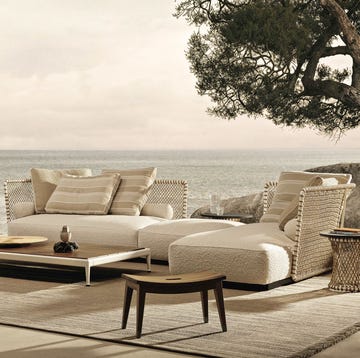In a city, a private garden is a luxury, but a public garden is a gift. In many cases, the man doing the gifting is Piet Oudolf. A leading proponent of the New Perennial movement, the Dutch garden designer is behind some of the best-loved and most beautiful urban gardens of the modern age, from the High Line in New York City to the Queen Elizabeth Olympic Park in London, Chicago’s Lurie Garden and the Vitra Campus in Germany.
Unlike the Victorians’ manicured parks, his meadowscapes unfurl in dreamlike drifts of wild grasses and prairie-style planting. Crucially, they look good all year round.
Many would love to emulate his emotional, naturalistic style of planting, but is that possible if space is limited? Can you create a meadow on a balcony?
What's everyone reading?
Oudolf’s answer is refreshingly honest and relaxed: ‘A meadow needs space,’ he explains, ‘but you can do nice planting. Gardening is a very personal thing, so I don’t direct people to the style I do. If they like it, they can choose from my palette of plants – most of which have a certain resilience– or just try planting plants you like and see how they do.’
So how can you incorporate aspects of Oudolf ’s style into your own space, whether that’s a window box, balcony or back garden? It boils down to ensuring you have something interesting happening all year. ‘It starts with little bulbs or plants that flower in the winter,’ he says, adding, ‘then the structure of plants emerges going into the summer. All of my gardens are based on that life cycle. You want to go into the garden because every day is different.’
Central to Oudolf ’s approach is the perennial – a plant that flowers, sets seed and dies back each winter, re-emerging the following year. Favourites include rudbeckias, asters, monarda and helenium. He loves their dynamism: ‘Trees are slower than this herbal layer – this week in flower, the next week in seed... The whole cycle progresses so quickly, you feel it better. It’s more direct.’
Making an ‘Oudolf-style’ garden is as much about emulating his attitude as his aesthetic. ‘You cannot really talk about a style when you talk about gardening,’ he explains. For him, it’s simply about arranging plants you love in combinations that bring joy, making sure there’s something new happening in every season, and considering wildlife. ‘It’s important that you have plants that set seed for birds in the fall, or flowers that are good pollinators,’ he insists.
Oudolf is clear that, while his landscapes are known for their untamed style, they are very much designed and planned out in meticulously detailed sketches. ‘People think we make nature – we do not. We make gardens that look wild. I work precisely with plants that look natural and I use a lot of grasses that emphasise that idea of wildness. To the eye they’re more loose and spontaneous.’
Perhaps the most important lesson that anyone can take from Oudolf’s gardens and apply to their own space (and life) is to savour the small joys of every season. For him, it’s not just about spring buds or the blooms of high summer, but the scent of a tree when its leaves turn yellow in autumn, the unexpected sight of a flowering shrub in deepest winter, or the glitter of frost on a seed head – savouring the in-between and recognising the beauty in decay and death.
He is relaxed about the lack of control he has over a garden once it belongs to the wider world. Even if someone is just passing through his work, this generous gardener knows it will have an impact. ‘That you at least stand still for a while and say, “Okay, this is something different.” That is what I try to do: move people a little bit in a direction they do not normally go.’ oudolf.com
















